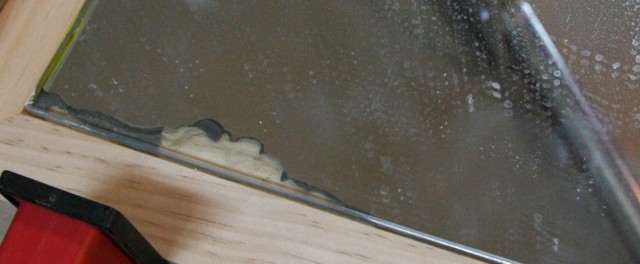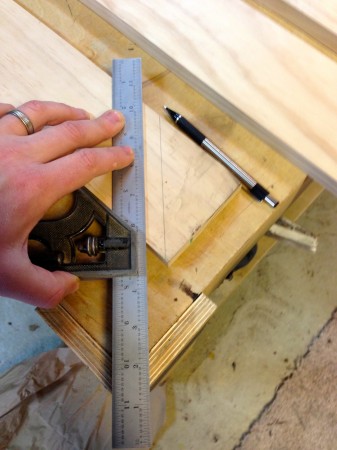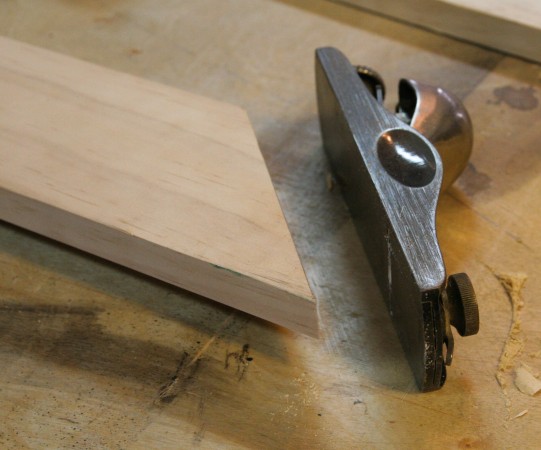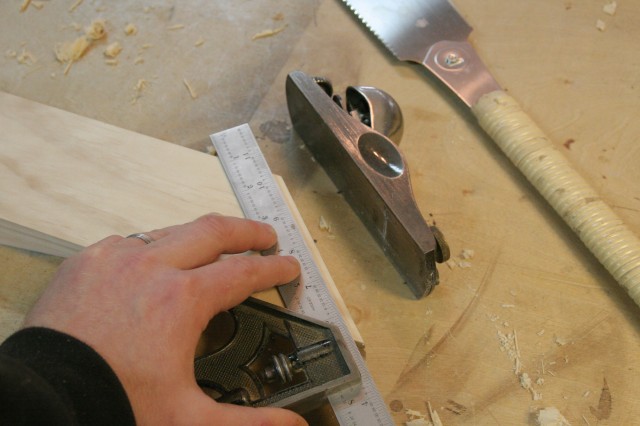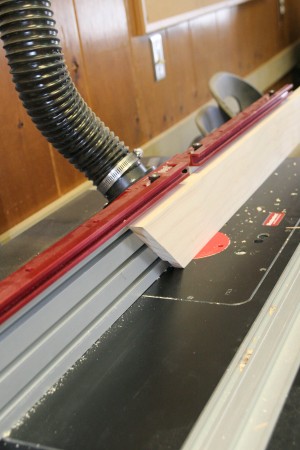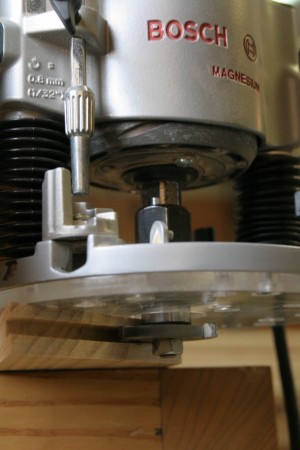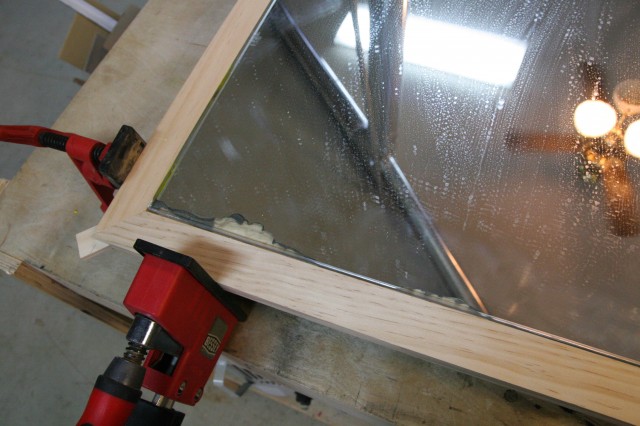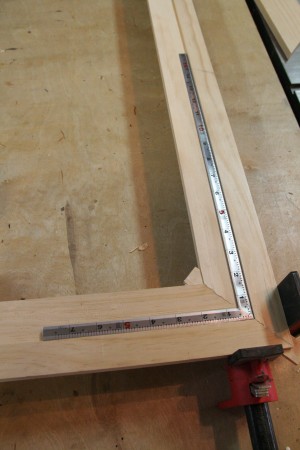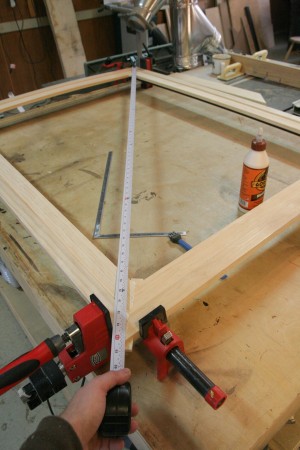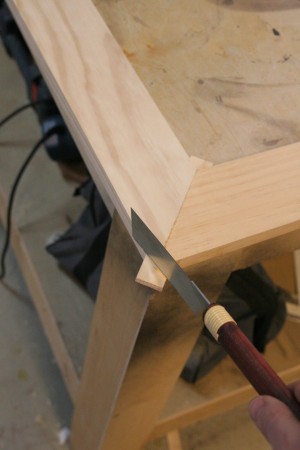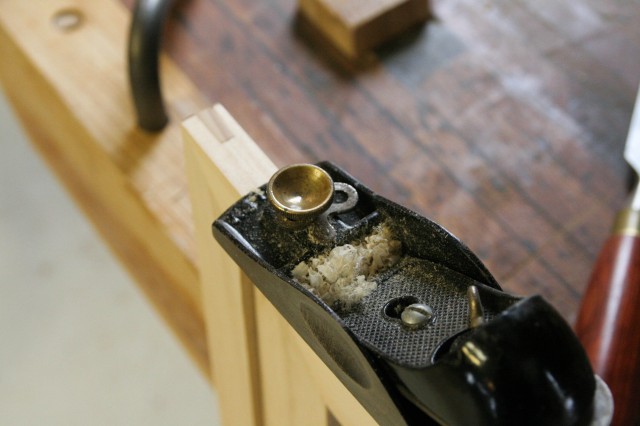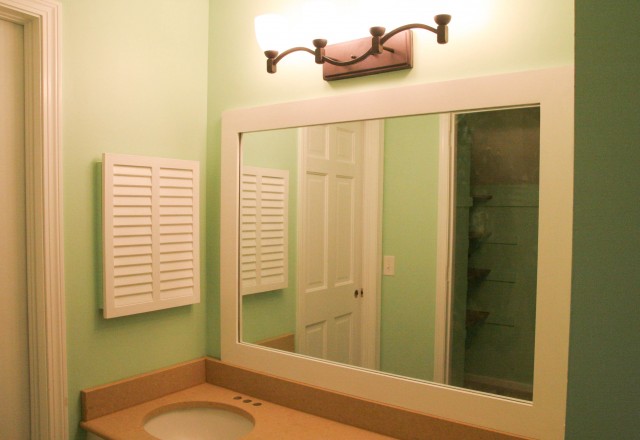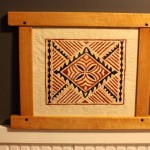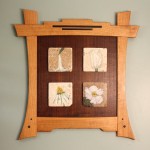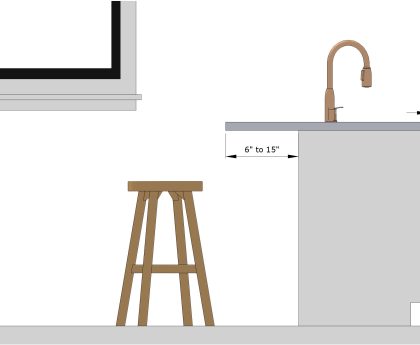Most woodworkers I meet always started the same way; you need to do a project or two around the house, so you buy a tool or two and it just escalates form there. Thats how it started for me and I’m guessing that if you are just starting out that’s how it is for you too.
One of the most basic projects that always seems to be made are frames. Whether it’s for a picture or a mirror it’s a great starter project. Personally around our house right now we have 4 rooms under renovation. One of these rooms had an old mirror with no frame that had just been glued to the wall. Water from the sink had worked itself up under it and ruined the edges of the reflective material. Additionally years of sloppy painting has left the edged looking distinctly tie-died.
Instead of scrapping the mirror and starting over I decided to just frame it. The rabbit (a grove on the edge of a board) will overlap the edge of the mirror and hide all the dammage.
The tooling for this project is pretty basic. All you need is a combination square, tape measure, a block plane, a saw of some kind a router, and some clamps. If you are looking for advice on specific hand tools see my post from last year’s get woodworking week. I went to my local big box hardware store and bought 3 pieces of quality pine, free of knot’s etc.
Cutting your board to length and the 45 degree miters:
To get started it’s just a matter of marking 45 degree angles and cutting the line.
If you are just getting started, cutting an accurate 45 degree angle can be a bit easier said than done… this is where the block plane comes in. Just put a thin strip of something under your piece of wood to raise it off the table a bit and lay the block plane on it’s side. this allows you to clean up the end of your board and bring the angle to exactly 45 degrees.
Cutting the rabbit (the grove to hold the glass)
My frist choice for an extremely versatile power tool in any shop, is a router. I bought a used Bosh router off ebay years ago as my first woodworking tool. It’s served me extremely well and is still one of my most used tools for woodworking. Utilizing the edge guide you can make multiple passess until you have the width and depth you want.
If you mount the router in a router table you can cut the grove that way (this is a bit safer and my preferred method).
Splines
Mitered corners look great but they need to be reinforced somehow. You cant just glue the ends of two boards together and expect them to be a strong enough joint to hold together in the long term. One of the ways we solve this problem is through the use of splines (small pieces of wood that bridge two other pieces of wood together).
Normally you want the grain to run across the two boards and bridge them. This would make for a very strong joint! I was in a bit of a hurry and didn’t have any pieces of pine wide enough to cover the entire length. You could just use two pieces of wood, but in my rush I didn’t think of that. For something as light duty as a frame, running the spline with the grain is more than strong enough.
One of the best ways to cut this joint on a long piece of wood like a frame is with a slot cutting bit in your router. As you can see in the photo below there is a bearing that rides along the edge of the miter and allows you to cut a slot in the middle of your board.
Glue up time
Step one in ANY glueup is to assemble the pieces and make sure everything is looking the way you think it should. This is the time to have a sanity check to make sure you didn’t make any mistakes. If any of the corners aren’t looking like they quite come together like you think they should, get out your block plane and see if you can clean them up a bit.
Lay out all your supplied and clamps and make sure you are ready to go. I’m using a couple pipe clamps, a square, a tape mesure, and a brush to spread the glue.
Put glue in each slot and on the spline.
Assemble the entire frame and adjust the clamps until all the corners look good to you and it looks square. Then use your tape mesure to mesure diagonally in two directions. If the numbers match then congratulations you have a square frame! If they dont match then just yank a bit on the longer direction to try and square it up. It make take a few times going back and forth but it should come into a close enough alignment.
Once the glue is dry take off the clamps and use your saw, and then your block plane, to trim the splines and then flush them up to the edge.
Clean up the corners with the block plane or some sand paper.
Congratulations you’re done! If you have a spouse or significant other that lives with you, ask for a high five! 🙂 As your skills improve you can start playing around with other more complicated frames. Here are a few frames I’ve done this year.
Make sure to check out other Get Woodworking projects over at Tom’s Workbench

